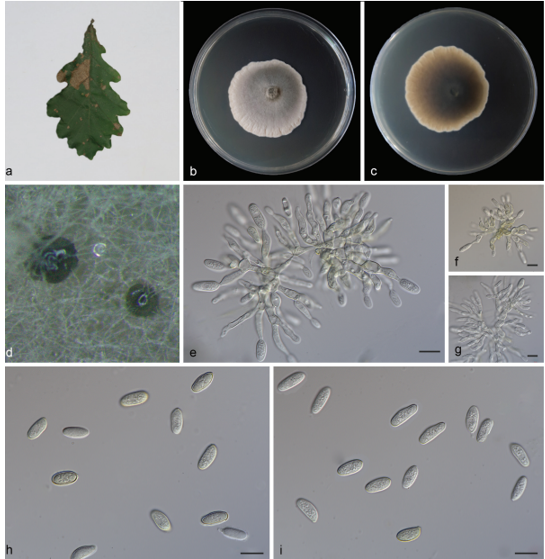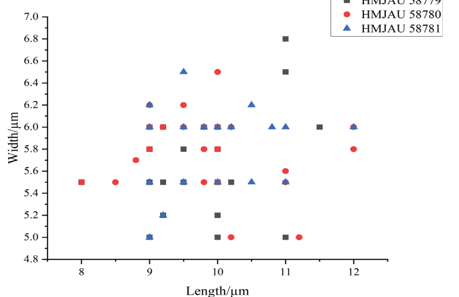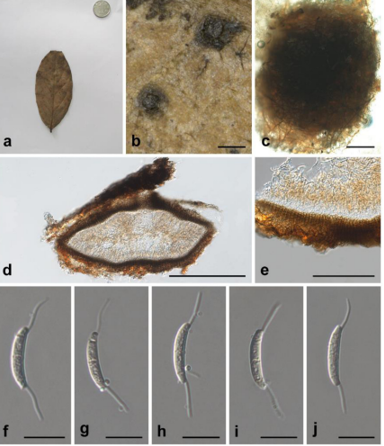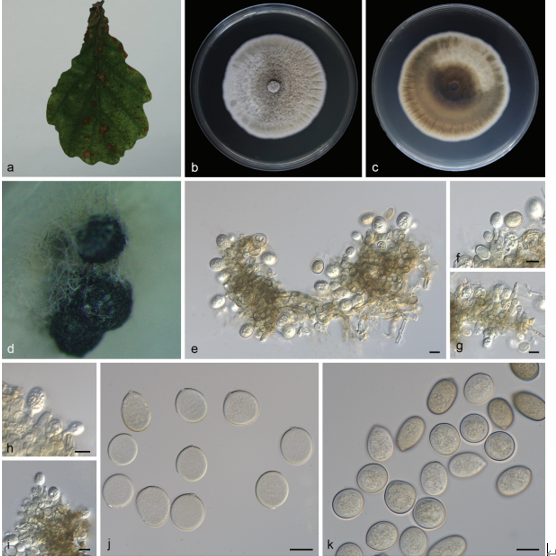Neoroussoella magnoliae N.I. de Silva & K.D. Hyde 2020
Index Fungorum number: IF556463; Facesoffungi number: FoF 06106
Holotype: CHINA, Yunnan Province, Xishuangbanna, dead twigs (attached to the tree) of Magnolia grandiflora (Magnoliaceae), 26 April 2017, N. I. de Silva, NI158 (MFLU 18-1022, holotype), living culture, MFLUCC 18-0721, KUMCC 17-0190.
Morphological description
Sexual morph: Ascomata 200–300 µm high, 200–250 µm diam ( x = 245 × 230 µm, n = 10), semi-immersed on host surface, solitary, globose to subglobose, dark brown. Neck small, elongate, located in central, covered by host tissues. Peridium 15–20 µm wide, comprising brown textura prismatic cells. Hamathecium comprising 1–2 µm wide, cylindrical to filiform, septate, hyaline pseudoparaphyses. Asci 45–60 × 4–6 µm ( x = 56 × 5 µm, n = 25), 8 spored, bitunicate, fissitunicate with a short pedicel. Ascospores 7–9 × 3–4 µm( x = 8.2 × 3.2 µm, n = 30), overlapping, fusiform, 1-septate, light brown and brown. Asexual morph: Undetermined.
Culture characteristics: Colonies on PDA reaching 25 mm diam after 1 week at 20–25 °C, colonies medium sparse, circular, flat, surface slightly rough with edge entire, margin well-defined, cottony to fairly fluffy, colony from above: greyish green; reverse light brown.
Habitat: On dead twigs of Magnolia sp.
Distribution: In China.
GenBank Accession: ITS: MK801232; LSU: MK801230; SSU: MK801231; TEF1: MK834373.
Notes: A sexual morph of Neoroussoella was collected in this study and phylogenetic analysis confirmed its placement in Roussoellaceae. The asexual morph of the new species was not observed from the culture. In our multigene phylogenetic study, N. magnoliae (MFLUCC 18-0721) clustered with other species of Neoroussoella (Fig. 24). The new species expands the host families inhabited by Neoroussoella with the addition of the woody plant family Magnoliaceae. N. magnoliae differs from other Neoroussoella species in having the shortest asci (45–60) µm and the shortest ascospores (7–9) µm except for N. leucaenae. N. leucaenae is morphologically similar to N. magnoliae, but phylogenetically distantly related. N. leucaenae was collected from a decaying pod of Leucaena sp. (Fabaceae) in Thailand. Morphological differences in ascomata, asci, ascospores, condiomata and conidia among Neoroussoella species are given in Table 2.
Reference: Hai‑Sheng Yuan1,2· Xu Lu1,2 · Yu‑Cheng Dai3 ·
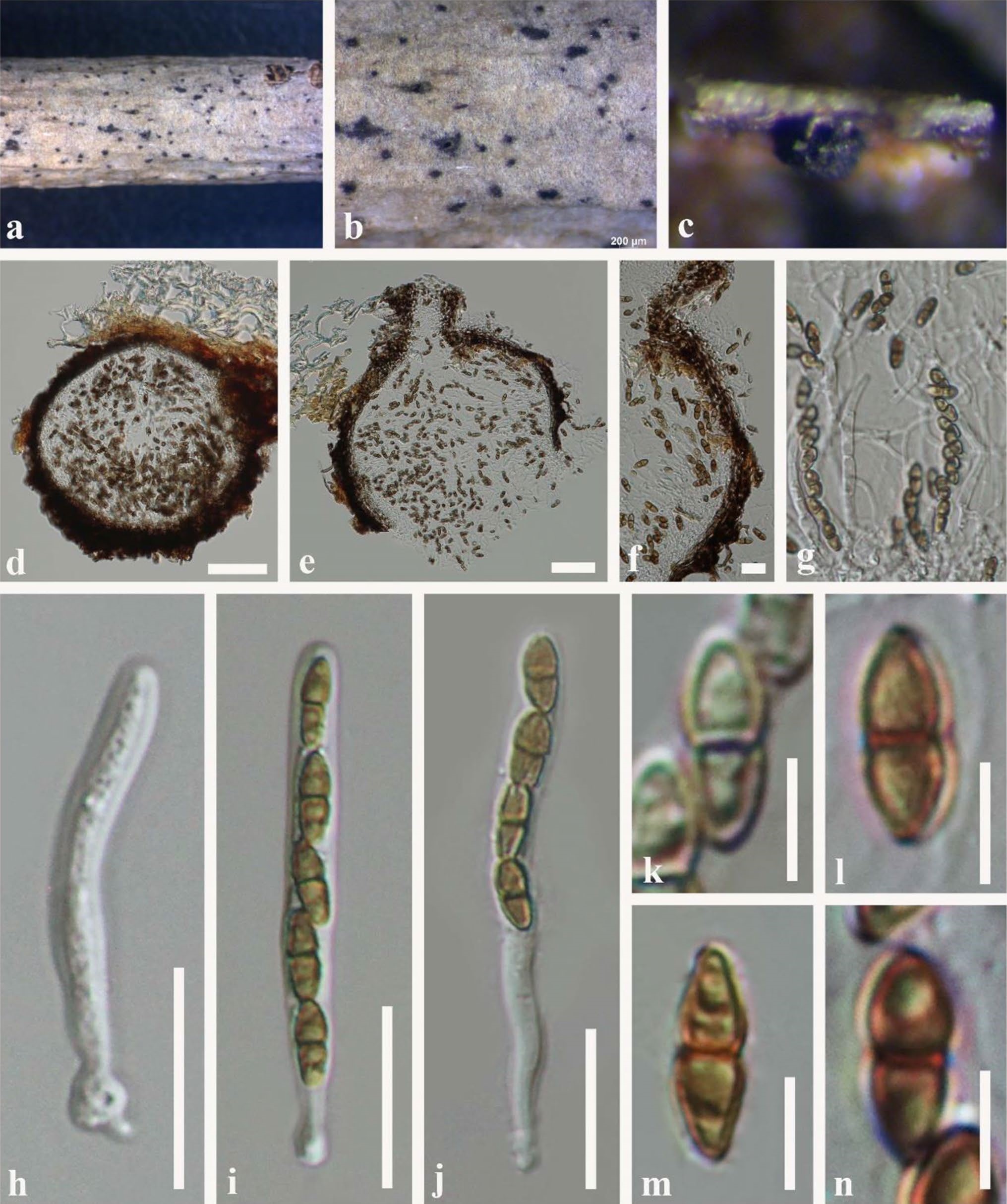
Neoroussoella magnoliae (MFLU 18-1022, holotype). a–c Appearance of ascomata on host surface. d, e Vertical sections through ascomata. f Peridium. g Pseudoparaphyses. h–j Asci. k–n Ascospores. Scale bars: d, e = 50 μm, f = 10 μm, h–j = 20 μm, k–n = 5 μm


